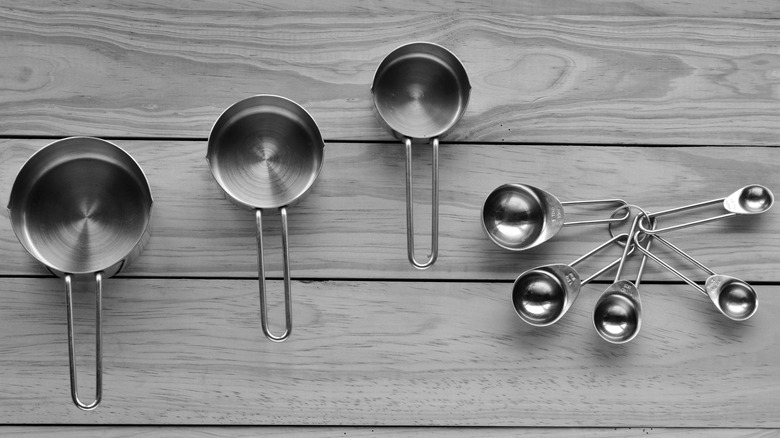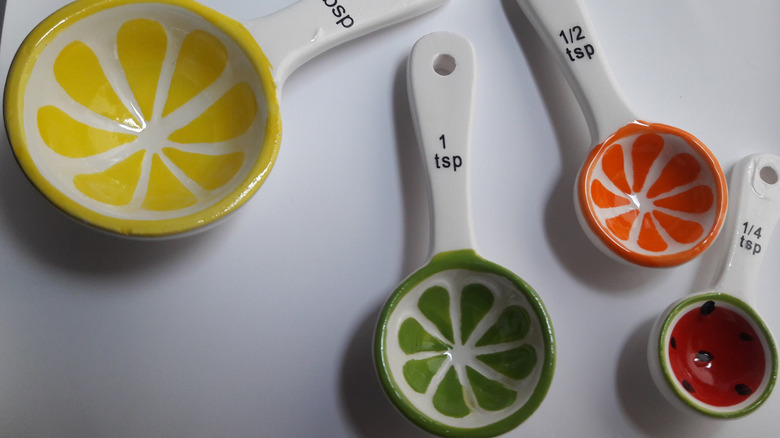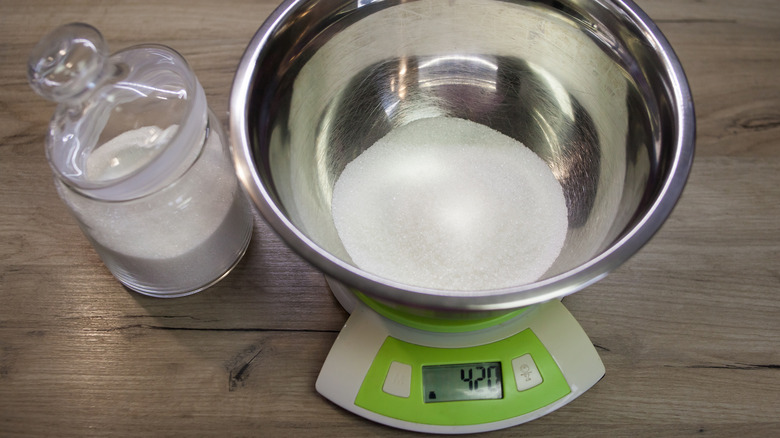Perfect Your Bakes By Staying Away From Novelty Measuring Cups
When it comes to cooking a meal, you may have heard someone say "I just threw it all together." And often with stews, chicken dishes, and casseroles, that really is the case. Baking doesn't work like that as it's more of a science, according to The Tufts Daily. Someone who loves to braise, fry, or stew doesn't need to be super precise. Bakers, on the other hand, have a smaller margin for error. Too much baking soda, not enough flour, or any number of measuring errors can ruin a recipe. So, bakers can't live without all manner of measuring devices or the best hacks for using them.
Well-written bake recipes will have precise, proven measurements, according to Joy of Baking.com. If you follow those recipes, you can expect results that look like the photo in the cookbook or on the web page. If you're tinkering with a recipe of your own, the only way to replicate it is to measure carefully each and every time. If you do that, you can do the same thing, over, and over, again, and again.
Measurements are only as good as their devices
Measuring cups are meant to be accurate, not adorable. Insider notes that those cutesy cups and spoons aren't ideal for precise measuring. Whether the lip of the measuring cup isn't flat, the lines aren't calibrated, or it was always more about an artistic expression, these need to be avoided. Recipes are written in restaurants and test kitchens, which use tools that are sturdy, and easy to use on top of being accurate.
Ingredients that don't pack evenly, are full of air, like flour, or are sticky can make even a perfectly calibrated measuring cup collect amounts that vary enough to alter a recipe. To be consistent, use the same manner to measure. The most common technique for these fluffy items is to fluff them up, dip the measuring cup, collect a heaping amount, and use a flat edge to sweep off the excess. That should make all of your cups consistent. But, even with the tried and true "dip and sweep" method, my cup and your cup could be off by as much as 20%, per America's Test Kitchen.
Tip the scales toward perfection
A sturdy set of metal measuring spoons and cups are a must. The New York Times has suggestions for those, but they're big proponents of using a scale for as much as possible. For those light and airy ingredients like powdered sugar, and for odd-shaped ingredients like chocolate chips and nuts. A digital kitchen scale is an inexpensive way to upgrade your home kitchen like the pros.
Maybe the best part of using a scale is how efficient it makes your measuring and mixing. Place a bowl onto the scale, and start adding ingredients, being sure to zero it out between ingredients. Measuring from a container directly into the mixing bowl is faster and minimizes the number of dirty dishes. This is especially useful when measuring sticky, messy ingredients like molasses or honey. If recipes don't list the weights, there are great cheat sheets with common ingredients listed at a glance. King Arthur Baking Company is especially thorough. The most common ingredient weights will soon become rote.
There are exceptions though. The smaller amounts of ingredients like salt, yeast, vanilla, and baking soda don't weigh enough for many kitchen scales to weigh accurately. You'll have to find some great measuring spoons for these and hope for the best.


